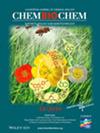DNA 酶对多肽赖氨酸的序列依赖性酰化作用
IF 2.6
4区 生物学
Q3 BIOCHEMISTRY & MOLECULAR BIOLOGY
引用次数: 0
摘要
修饰完整多肽的方法很有用,但在氨基酸位置和序列上下文方面可能缺乏选择性。在这项工作中,我们利用体外选择技术鉴定了能以序列依赖方式酰化短肽中一个赖氨酸残基的 DNA 酶。当 DNA 酶位于肽中的其他残基时,不会对赖氨酸进行酰化,酰化活性取决于赖氨酸的序列上下文。在制备纳摩尔尺度上可以观察到良好的酰化收率。这些发现为进一步开发 DNA 酶,使其更广泛地应用于多肽和蛋白质底物的自上而下的赖氨酸酰化带来了希望。本文章由计算机程序翻译,如有差异,请以英文原文为准。

Sequence-Dependent Acylation of Peptide Lysine Residues by DNAzymes
Methods for modifying intact peptides are useful but can be unselective with regard to amino acid position and sequence context. In this work, we used in vitro selection to identify DNAzymes that acylate a Lys residue of a short peptide in sequence-dependent fashion. The DNAzymes do not acylate Lys when placed at other residues in the peptide, and the acylation activity depends on the Lys sequence context. A high acylation yield is observed on the preparative nanomole scale. These findings are promising for further development of DNAzymes for broader application to top-down Lys acylation of peptide and protein substrates.
求助全文
通过发布文献求助,成功后即可免费获取论文全文。
去求助
来源期刊

ChemBioChem
生物-生化与分子生物学
CiteScore
6.10
自引率
3.10%
发文量
407
审稿时长
1 months
期刊介绍:
ChemBioChem (Impact Factor 2018: 2.641) publishes important breakthroughs across all areas at the interface of chemistry and biology, including the fields of chemical biology, bioorganic chemistry, bioinorganic chemistry, synthetic biology, biocatalysis, bionanotechnology, and biomaterials. It is published on behalf of Chemistry Europe, an association of 16 European chemical societies, and supported by the Asian Chemical Editorial Society (ACES).
 求助内容:
求助内容: 应助结果提醒方式:
应助结果提醒方式:


